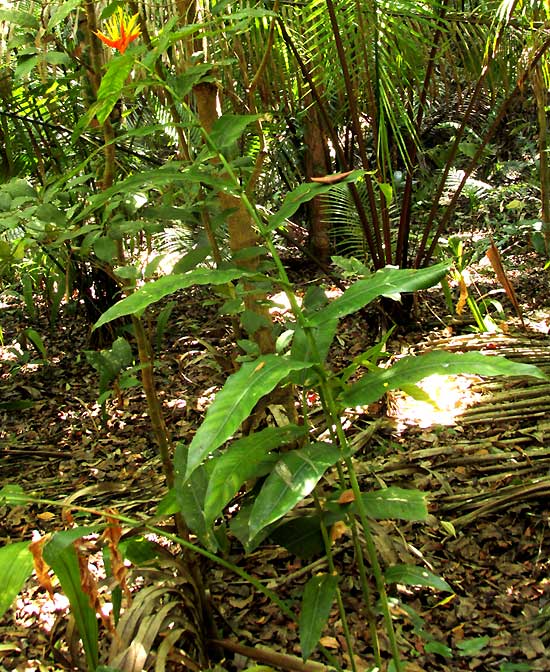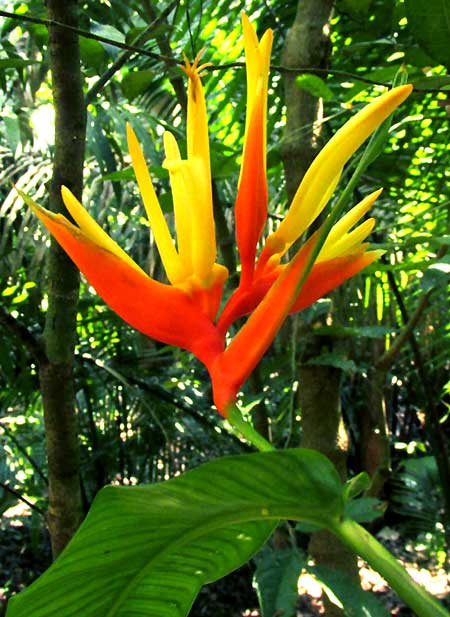Excerpts from Jim Conrad's
Naturalist Newsletter
Newsletter entry of March 15, 2019, with notes from a camping trip at El Seibal Archaeological Park in northern Guatemala's Petén department; tropical rainforest, elevation ~220m (~720 ft), ~N16.492°, W90.209°
Yellow Heliconia
Last month, on April 1, as I explored woodland trails connecting Maya ruins, among dense shade along the trail a shoulder-high plant caught my eye with its small cluster of brightly yellow and red flowers, shown below:

A close-up of the flowering head appears below:

The flowers are shown yet closer below, with my fingers for scale:

In the above picture, the orange, scoop-shaped items are "spathes," which are much-modified leaves. Clusters of yellow flowers arise from each spathe. Each flower has three sepals, three petals and six stamens, which can be observed by breaking apart the flower. However, these plants were uncommon and I was in such awe of them that I didn't feel like dissecting a blossom.
Most folks with any interest in plants recognize this as a kind of plant often seen in tropical gardens or grown indoors in pots. Maybe the best-known of this type is the much grown Bird-of-Paradise, genus Strelitzia. However, Strelitzias are native to southern Africa. Our American counterparts are known as Heliconias, and our Guatemalan plant is HELICONIA AURANTIACA, variously known as the Yellow Heliconia, Golden Heliconia, Golden Dwarf Heliconia, and such. Yellow Heliconia is endemic to southeastern Mexico, Belize, Guatemala, Nicaragua and Costa Rica.
The Yellow Heliconia is smaller and more delicate looking than most other heliconias. After rains, water pools in the spathes, attracting birds and other animals who may help with pollination.